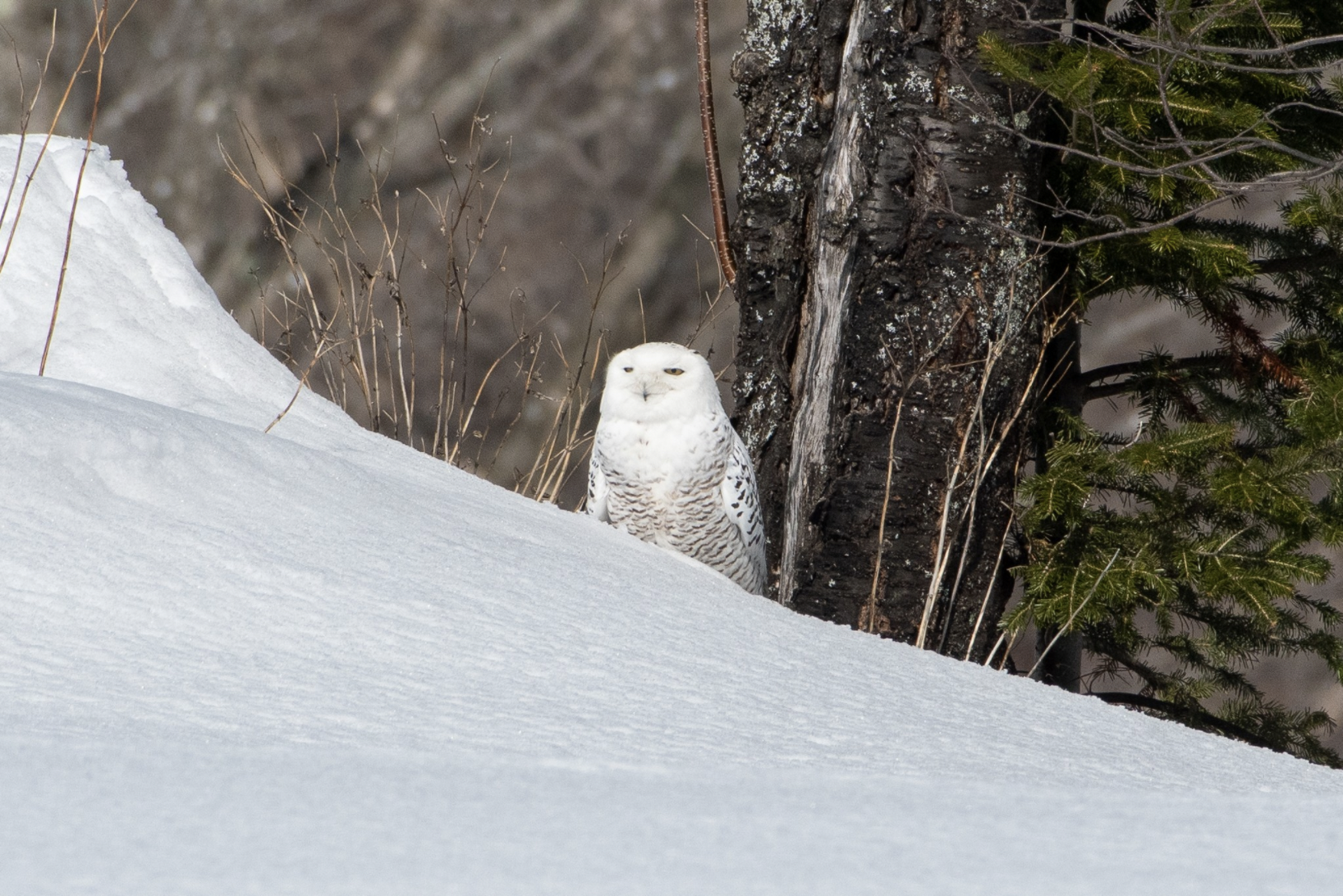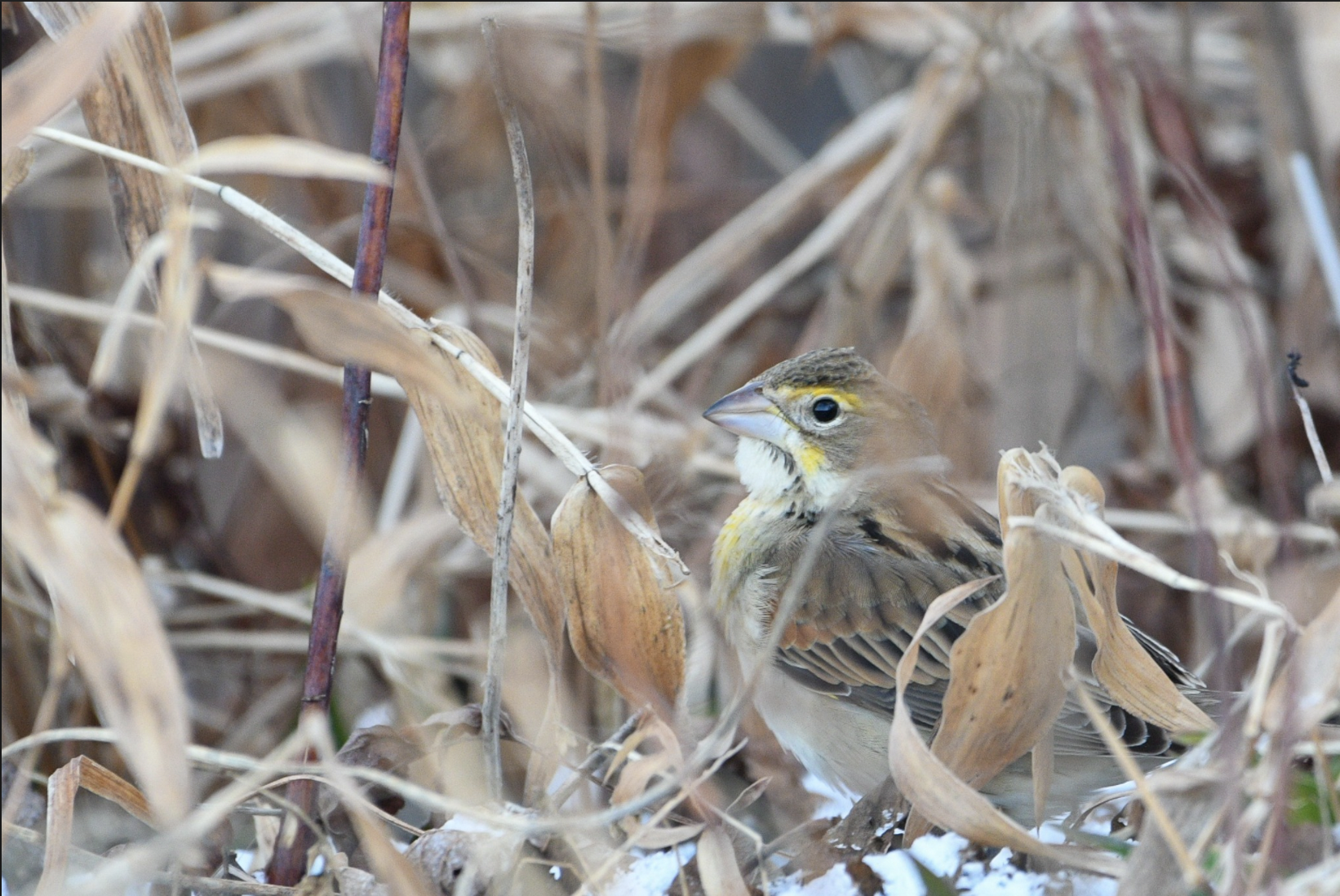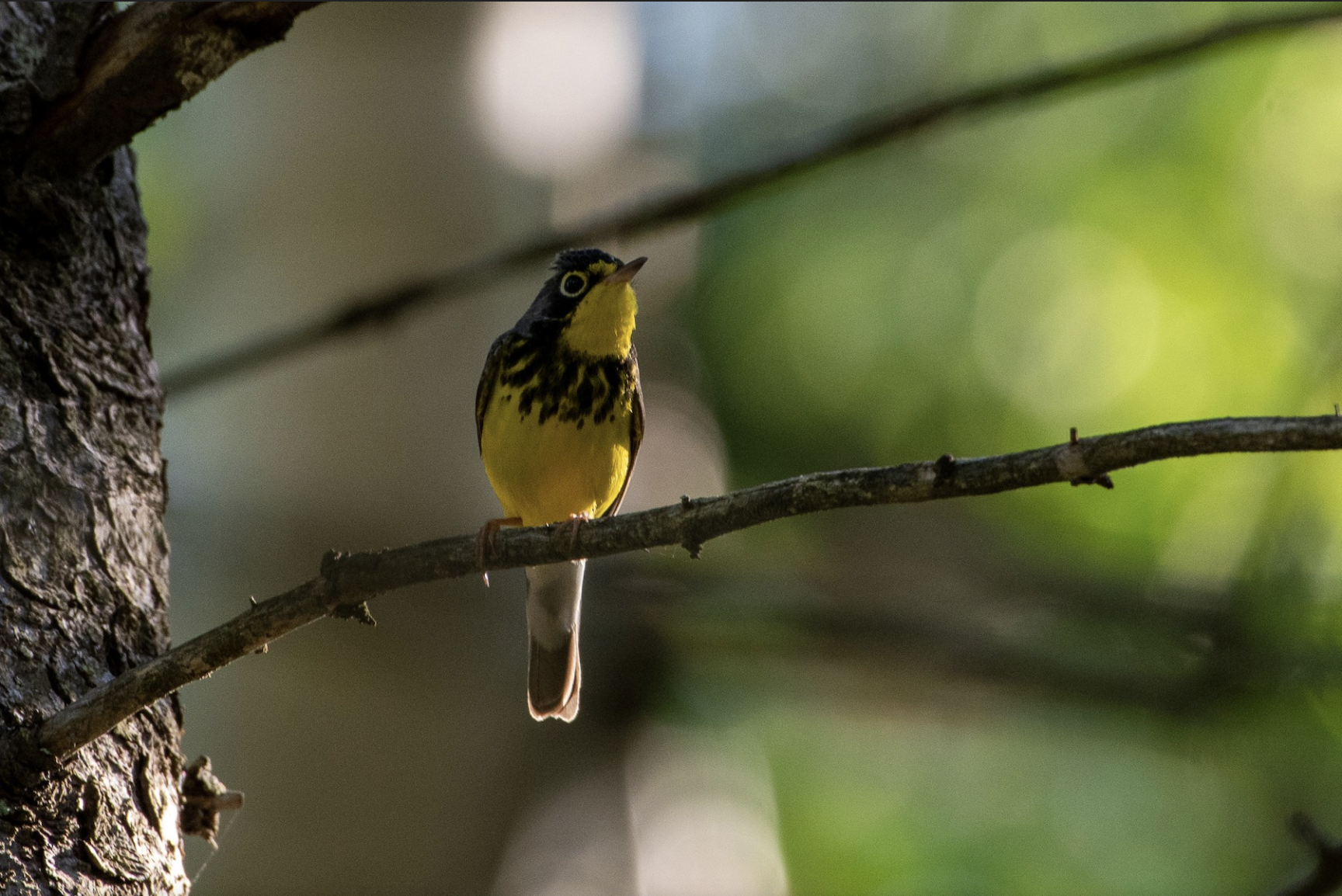Vermont Town Birding Challenge
By Richard Littauer and Nathaniel Sharp
From the northern boreal forests of Canaan to the fields and southern hardwood forests of Pownal, Vermont’s 251 towns offer up a vast array of habitats, natural communities, and birdlife. Recently, Vermont birder Bob Heitzman–after nearly a decade of birding across the state while meticulously documenting his sightings on Vermont eBird–accomplished his goal of birding in each of Vermont’s 251 towns, a monumental achievement! In early March, Bob submitted the very first Vermont eBird checklist ever at the unincorporated gore of Warner’s Grant, with a drumming Pileated Woodpecker signalling the end of his Vermont Town Birding Quest. If you’d like to re-trace Bob’s steps as he birded his way through the villages and towns of Vermont and see some of his gorgeous photography, you can visit his 251 Town Birder blog and read through his accounts of birding adventures to towns far and wide.
If you’d like to get a sense of how impressive Bob’s accomplishment of birding in every Vermont town is, you’re in luck. Vermont birder Richard Littauer has developed a tool that allows birders to see how many towns they’ve birded in, as well as how many species they’ve seen in each town using data from Vermont eBird. The Town Birding Tool provides a map of every Vermont town with the number of species that has been reported in each. Clicking on a town reveals a list of every species that’s been reported from that town, as well as a list of every species that’s occurred in Vermont but hasn’t occurred in that town. Birders can use this to search for a list of species to be on the lookout for when they visit a new town in the hopes of adding a new species to that town’s bird list! Wondering if there’s been a Barred Owl reported in Tinmouth, or if Woodbury has a record of Swainson’s Thrush? This tool can answer all those questions and more.
To see how your personal Vermont eBird data fits into this map, simply go to “My eBird” and click “Download my data” in the bottom left corner of the screen. Once you’ve downloaded your eBird data, upload that file to Richard’s town birding tool and voila! You have a ready-made map of all the towns you’ve submitted Vermont eBird data in, with a list of the species you’ve seen in each. You can use this tool to see how many birds you’ve seen in your hometown, use it to look for places you’ve never birded in before, or even use it to see how close you are to reporting birds in every one of Vermont’s 251 towns.
Focusing your birding efforts at the town level can be rewarding in so many different ways, in terms of personal birding enjoyment and even in relation to eBird data quality. Birders range from world-traveling life-list builders to backyard feeder-watchers and everything in between. Town birding offers up a sense of excitement and discovery for birders of all experience levels and interests. Some folks might want to scour every forest and field, every hill and glen in their town to find as many species as possible, others might want to find a Black-capped Chickadee or Vermont’s state bird, the Hermit Thrush, in as many towns as possible, still others may enjoy visiting a new town for the sake of seeing a new place, and documenting whatever birds they come across along the way. Narrowing down your birding mindset from the state or county level to the town level encourages a deeper understanding and appreciation of place. It gets you wondering… What are the backroads of Baltimore like? What about the forests of Fayston? Or the ponds in Pawlet? Getting to know the birding hotspots of your hometown like the back of your hand can allow you to predict when familiar species will depart or return from migration, and exploring the public lands of a new town can introduce you to new birds, new ecosystems, and maybe some new birding friends!
As personally rewarding as town birding can be, thinking of birds at this kind of spatial scale can also reveal trends in data collection, and allow for more focused efforts in areas where bird population data is lacking. The vast wealth of community-sourced bird distribution and population data on eBird is used in all kinds of scientific applications, and with Vermont’s claim to fame as the most heavily eBirded state in the US per capita, one would think the state would be pretty well-covered. Not quite though! Population centers, major birding hotspots, and landscape features such as Lake Champlain and its accompanying wetlands draw birders like moths to a flame, which can skew the data towards these more frequently explored areas. Spreading the wealth, as it were, to areas birders visit less frequency can greatly increase our understanding of bird populations and distributions across the state. Finding out which Vermont towns have the fewest bird species reported on Vermont eBird required digging into the data, which revealed fascinating trends and raised new questions about how and where Vermonters report bird sightings.
The Vermont eBird website shows bird sightings by counties. Both Addison and Chittenden have records for 326 different species of birds. Chittenden isn’t surprising, as it is the most populous county; Addison is the 7th most populous. But both of these counties are also on Lake Champlain, which presents wonderful opportunities for lake birding for birders in those counties. The least birded county is Lamoille, with 223 bird species reported. It is the third least populated, and completely landlocked within the heart of the northern Green Mountains, one of the harder biomes to bird in within Vermont. None of this is surprising, given the attention paid to counties by birders in the state, particularly thanks to VCE’s 150 club.
It’s not possible to see town data on eBird. However, by using the eBird database, it is possible to get information based on the Vermont towns. Vermont has 255 political units beneath the county level: including 237 towns, nine cities, five unincorporated areas, and four gores. As of last November, of all of these towns, the least birded is tiny Baltimore, with only 50 species recorded there. It may be the only town in Vermont to have never seen a Rock Pigeon, or a Mallard, or a Canada Goose. The Turkey Vulture has never spread its wings there. A Northern Saw-whet owl has never tooted. Ok, strictly, this isn’t true. Those birds are almost certainly there. But there are no records on Vermont eBird of them having been seen there, and, as eBird now has integrated the state records of rare birds, there may not be a publicly available dataset which has noted those species.
Baltimore isn’t alone. There are sixteen towns with under 100 birds noted on eBird. Unsurprisingly, the most birded towns are right on the lake, in the most birded counties: Addison, with 359 species; Colchester, with 332; and Grand Isle, with 330 are the top three. Rockingham (296 species) just squeaks into the top ten , with Norwich (289) being the tenth. Both of these towns are on the Connecticut River, which means they are on another important migrating path for birds heading to Canada. They also are rife with birders. Norwich, in particular, is no surprise, as it hosts both VCE’s office (and therefore all of the itinerant and borderline delinquent birding staff) and also the Norwich Town Quest, which tries to see how many birds can be seen in Norwich within a calendar year. One wonders what Baltimore would look like if they also had such a challenge (perhaps they could eventually approach the 365 species seen in the other Baltimore). Overall, the average amount of species per town is 177.
Of course, species by themselves is not a very good metric for bird diversity, as it depends on the amount of checklists submitted or birders which have been to those towns. That data explains a bit of the discrepancy between towns, like Stannard (55 birds) and Burlington (317). Stannard has had a measly 12 birders; Burlington has had 1,429 separate eBird accounts submit checklists within the city limits. Comparing these isn’t fair. Avery’s Gore (72 birds) is the worst off, with only five birders ever having submitted checklists there. Looking at total checklists per town is also instructive: Burlington has 12,644 checklists. Baltimore has 19. Stannard has 31. Roxbury, a town in the third most-populous county of Washington, only has 36. Montpelier, just 20 minutes away, has 8,635 submitted checklists.
Another way of seeing under-birded towns is looking at general coverage. For instance, Bennington has a long history of keeping records of rare birds. We have Vermont eBird records there for 89 years, total, starting with an Eastern Whip-poor-will in 1904. The last year without a record was 1994. Newport Town, next to the city of Newport in Orleans County, has had a checklist submitted within only 11 years, and none at all from 1980 until 2010. Baltimore, sadly, wins the cake again here, with no bird sightings submitted since 2018.
Numbers are tedious. But, in short, all of this goes to show that there are parts of Vermont where people simply don’t bird all that often. For those who are interested in rectifying this situation, it’s difficult to suggest immediate ways of finding underbirded areas. However, there are some options. For instance, one could look at the list of hotspots which have never had checklists submitted: as of this writing, there are 70 of these. Most of these were created for Common Loon nesting surveys, which means they are lovely, remote ponds and lakes just ripe for an afternoon summer wander. Another fun way is to look at the maps of species sightings–for instance, the Yellow-Rumped Warbler–and try to find areas where it has never been sighted. Only 13 species have been seen in every town: the Blue Jay, American Robin, Red-eyed Vireo, American Crow, Common Raven, Song Sparrow, White-breasted Nuthatch, Dark-eyed Junco, Chipping Sparrow, Black-capped Chickadee, American Goldfinch, Hairy Woodpecker, and, surprisingly, the Chestnut-sided Warbler. For any other species, there’s a town out there where it hasn’t been seen.
Another option is to join projects such as the 251 Project on birdinginvermont.com. Simply share any complete checklists from anywhere in Vermont with the eBird account “vermont251”, and Richard Littauer will add it to the database of towns birded in for this year. So far, Vermonters using this project have collectively birded in 142 towns – not a mean feat, considering how scarce birds are in winter. The goal of the project is to leave no town unbirded in 2020 – Baltimore, here we come.
Considering it’s taken 17 birders that have submitted checklists to the 251 Project to collectively observe birds in more than 140 towns, just think of the amount of effort it would take for one birder to see birds in all 251 towns, plus a few gores and unincorporated territories to top it all of! Our hats are off to Bob Heitzman for accomplishing such an impressive and inspiring feat. His efforts not only point out the rewards of town birding and exploring the state of Vermont, but also filled in Vermont eBird data gaps from small towns across the state. We hope you’ll join in on this fun community science effort!









